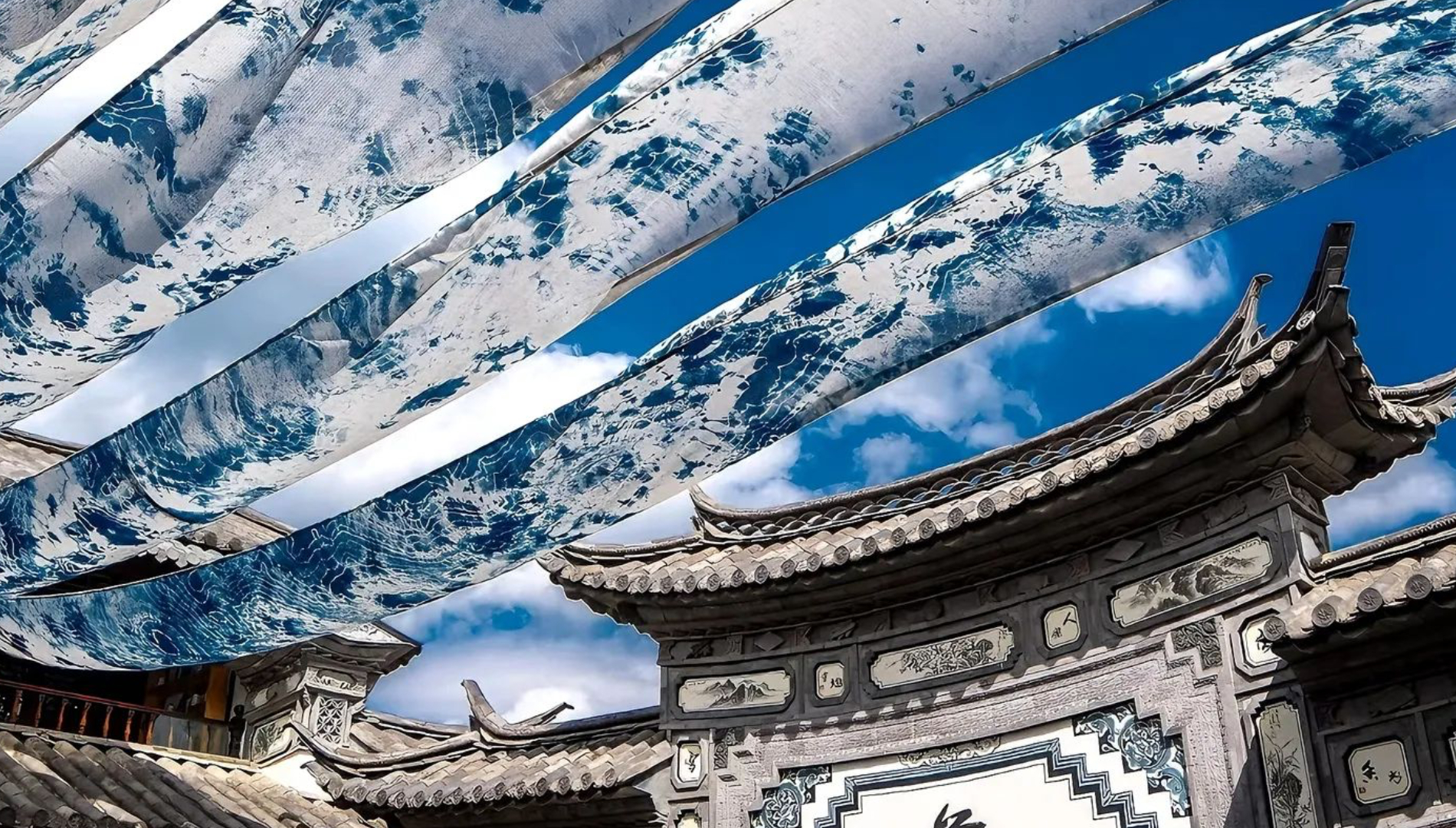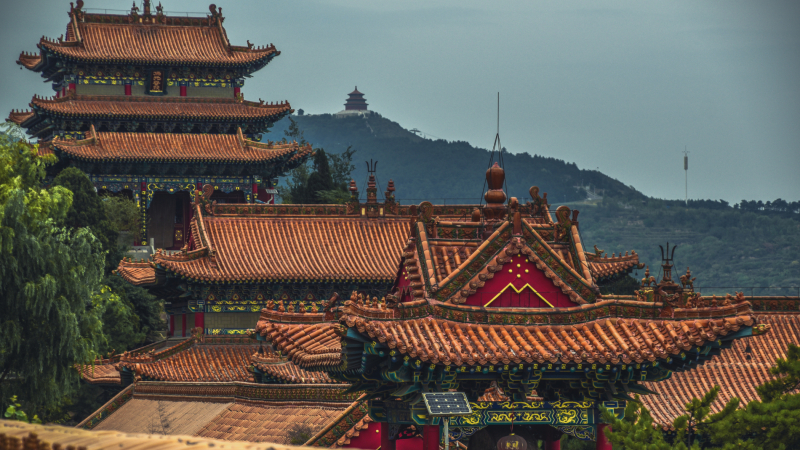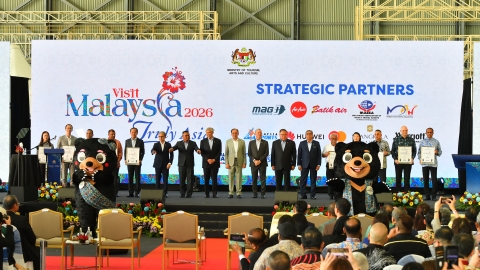When hands are "dipped in ink"
Indigo dyeing (靛蓝染) is one of the oldest traditional fabric dyeing techniques in China, with a history of thousands of years, closely associated with the lives of many ethnic groups such as Han, Miao, Yao, Buyi,...
Indigo dyeing is not only a simple manual technique of the Bai people, but also a long-standing cultural heritage, crystallized from unique historical, cultural and aesthetic values, closely associated with the snow and moon of the Dali land. With more than 1,500 years of history, the indigo dyeing art of the Bai people appeared in the Eastern Han Dynasty, flourished in the Ming - Qing Dynasty and became a unique and indispensable cultural symbol of this nation.
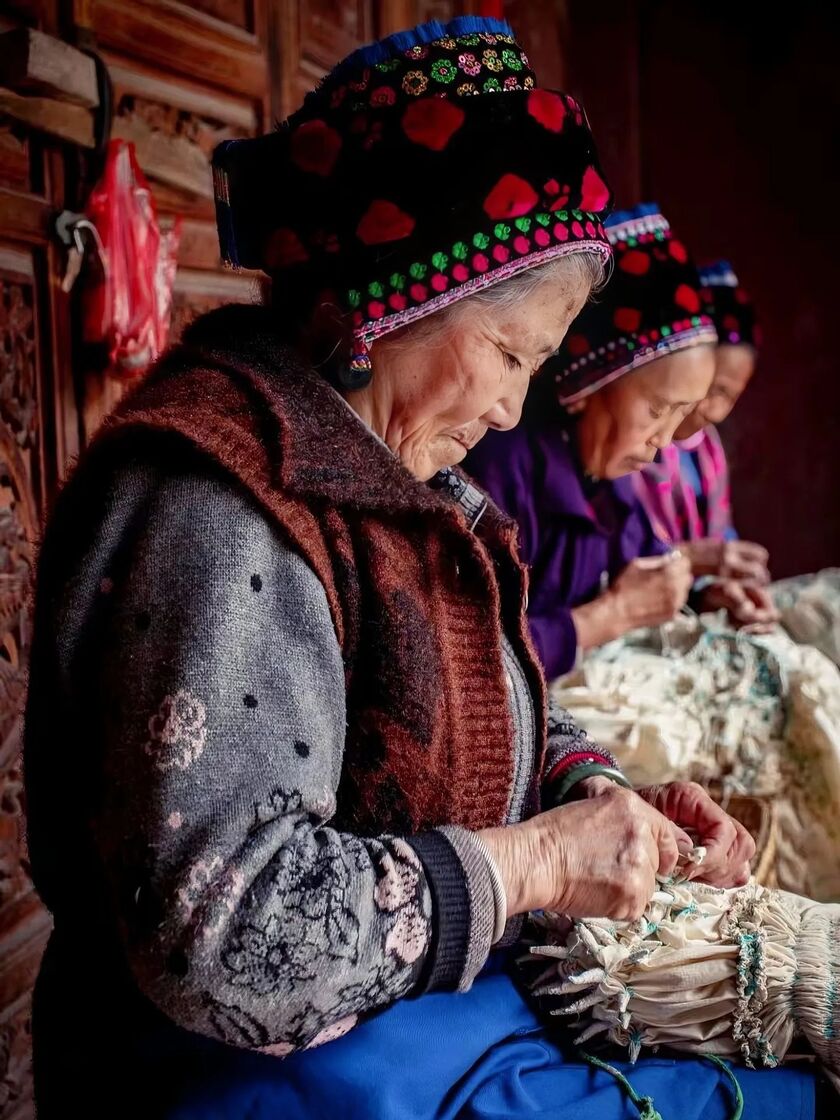
The art of indigo dyeing reflects the harmony between man and nature.
Traditional indigo dyeing techniques not only require skill and meticulousness, but also a harmonious combination between humans and nature. The raw material to create indigo is taken from the indigo plant, a wild herbaceous plant in nature. The indigo dyeing process is an art, requiring the worker to have extensive knowledge of indigo plants, fermentation techniques, dye preparation, as well as experience and patience.
The indigo dyeing technique has a history of more than 3,000 years, appearing during the Zhou and Han dynasties. Passed down through many generations, this method not only stopped in China but also spread to Japan, Korea, Vietnam and Southeast Asian countries.
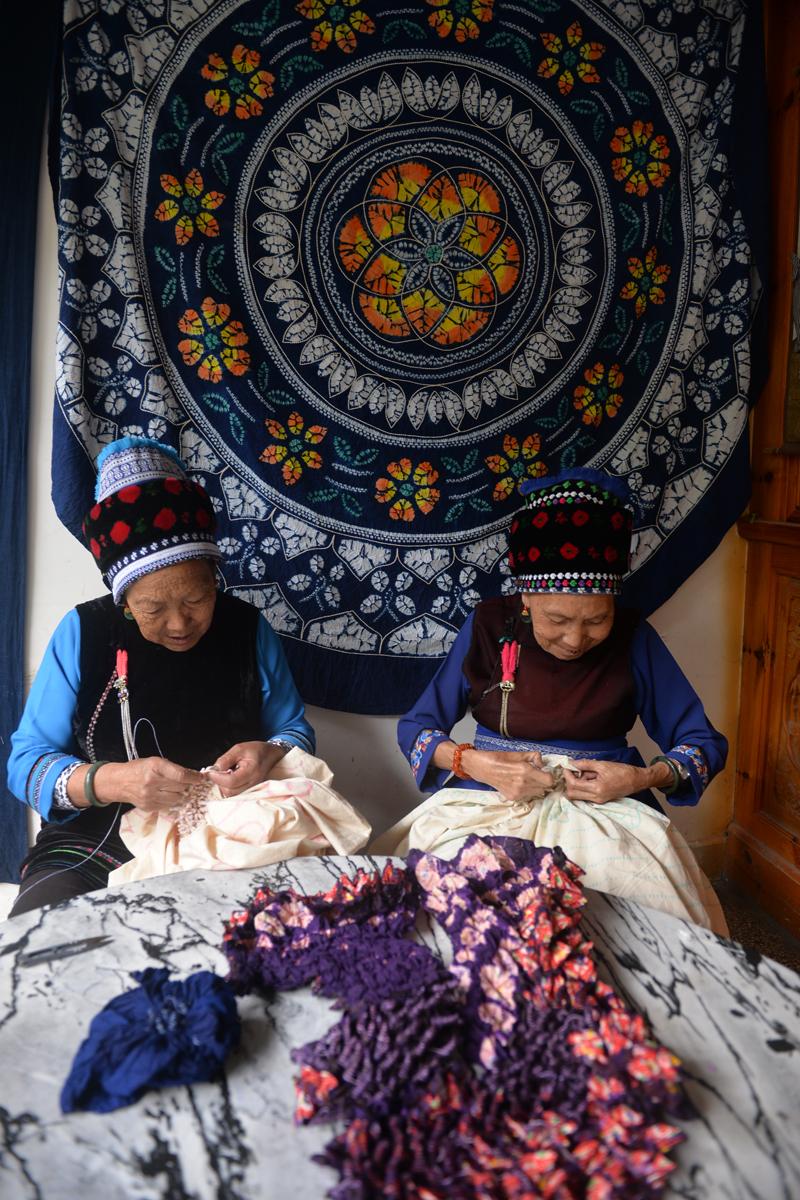
This dyeing technique appeared in the 3rd millennium BC and was widely used by ethnic groups that today developed into Asian countries.
Indigo is derived from plants, mainly two types of plants, Indigofera tinctoria and Polygonum tinctorium. Indigofera tinctoria, also known as indigo, is the most common plant used to create indigo. This plant is native to tropical Asia and Africa, and is widely grown in many countries around the world.
Indigofera tinctoria has the ability to create a deep, durable blue color, used to dye many different types of fabrics, from cotton, linen to silk. Indigo from Indigofera tinctoria has high color fastness, does not fade over time, bringing a classic, luxurious beauty to the products.
Polygonum tinctorium, also known as Japanese indigo, is a plant native to China. This plant produces a light blue color, often used in dyeing thin fabrics and silk. The indigo from Polygonum tinctorium has a bright blue color, not too dark, bringing an elegant and delicate beauty to the products. However, the indigo from this plant is not as colorfast as Indigofera tinctoria.
In Chinese culture, indigo is not just a color but also a profound cultural symbol, carrying deep philosophical and humanistic meanings. Indigo not only has aesthetic meaning but also symbolizes nobility, serenity and sustainability.

New trends and new concepts of life are "awakening", gradually bringing people back to nature and sustainable development, encouraging the revival of vegetable indigo dyeing and natural dyes.
Indigo is often associated with noble qualities of a gentleman, such as nobility, calmness, modesty and loyalty. Indigo also symbolizes sustainability and longevity, like the green of trees, mountains, and the sky, forever green over time.
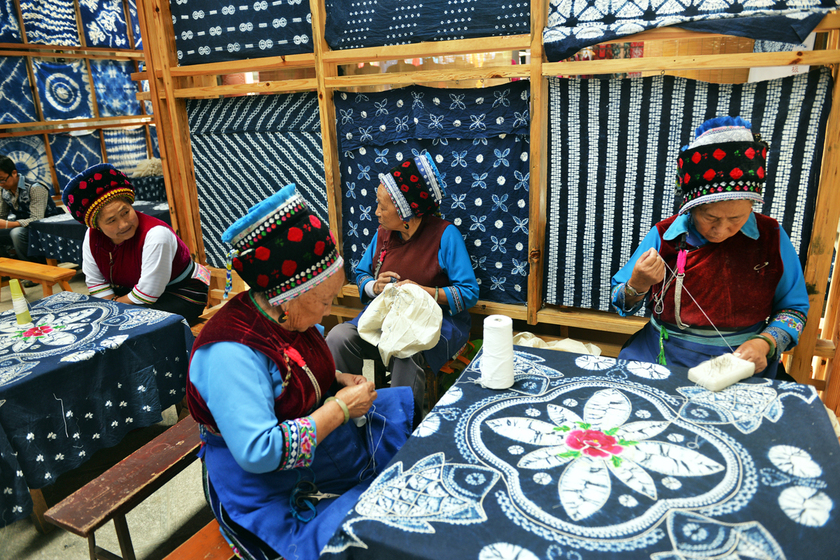
Using primitive tools and natural materials, the patterns are meticulously crafted by people to create patterns with bold national colors.
For the Bai people, indigo-dyed clothing is considered a unique cultural mark, expressing national identity and love of nature. Their indigo-dyed clothing is not only beautiful but also a work of art, crystallized from the creativity, ingenuity and dedication of the artisan.
Preserving the artistic soul of indigo dyed fabrics
To create indigo, the craftsman must go through a long journey with many meticulous and elaborate steps, from harvesting indigo leaves until the fabric has a deep, lasting blue color. Indigo leaves are harvested in the summer, when the amount of indigotin (color pigment) is at its highest. This is the "golden time" to harvest indigo leaves, because at this time the leaves contain the highest pigment content, ensuring a deep and lasting dye color.

Manual indigo dyeing is a difficult, complicated process and not every manufacturer has the patience to wait.
After being harvested, the indigo leaves are soaked in water to ferment naturally. This fermentation process is a "miracle" of nature, helping to transform the indigotin in the indigo leaves into a soluble form, creating a deep blue dye solution.
After the fermentation process, the indigo is filtered and dried into powder. When dyeing is needed, the indigo powder will be dissolved in alkaline water again. This is an important step, requiring the worker to have experience and his own "secret" to dissolve the indigo powder effectively, ensuring the dye color is even and beautiful.

The indigo dyeing process is very interesting, like a miracle on fabric.
The indigo dyeing process is very interesting, like a miracle on the fabric. First, the artisan will sketch and draw the pattern on the fabric. This step requires meticulousness, dexterity and creativity to create sophisticated patterns, imbued with traditional culture. Next, the artisan will skillfully tie different parts of the fabric with strings. This tying plays an important role in creating patterns on the fabric. The tied parts of the fabric will not absorb the dye, while the untied parts will absorb the dye.
After tying the strings, the fabric is dipped in indigo dye. The dyeing process is often repeated several times to achieve the desired color depth. When the strings are removed, the tied parts of the fabric remain white, while the untied parts are soaked in indigo, creating intricate, surprising and unique patterns.
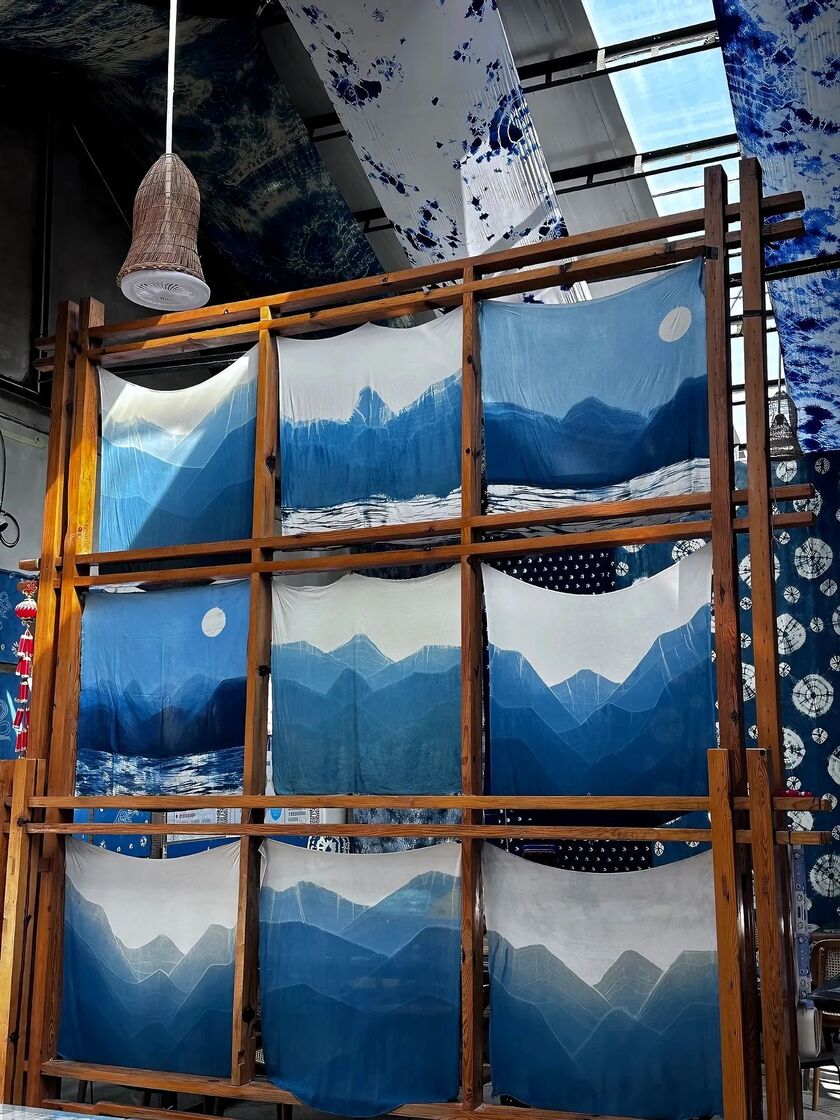
With its characteristic deep blue color, it is not only a simple fabric coloring method but also a precious intangible cultural heritage.
The Bai people are inspired by nature to create diverse patterns, from clouds on the Shangshan Mountain, ripples on the Erhai Lake to birds, flowers, insects... Each dyed cloth carries a story, expressing the creativity and love of nature of the Bai people.

Every piece of cloth tells a story
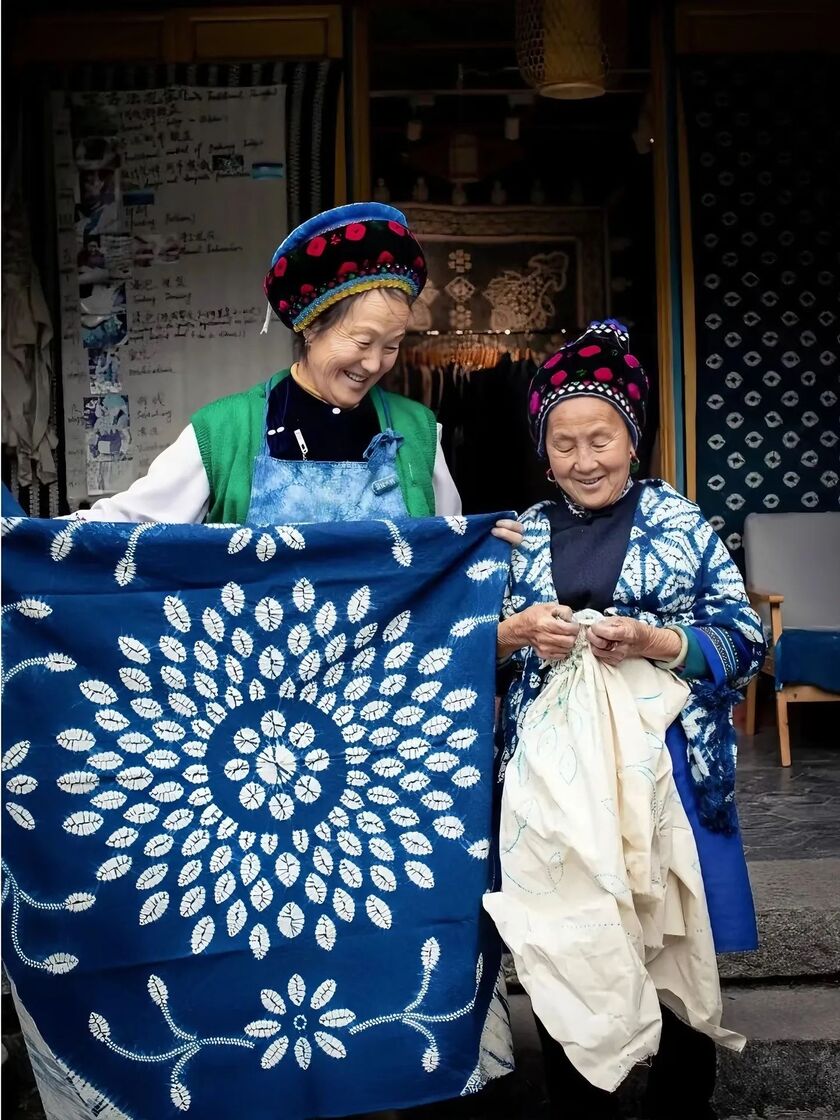
If you come to Dali, you cannot miss Chu Thanh village - the cradle of indigo dyeing art. This is the largest Bai village, where the quintessence of traditional craft is preserved. In particular, the movie "Going to the Windy Place" was also filmed here, with images of dyed fabrics flying in the wind, creating a poetic scene. Visitors can experience indigo dyeing themselves and bring home a unique work.
Indigo dyeing is not only a craft, but also a heritage that contains the spirit and history of the Bai people. Nowadays, more and more people are interested in intangible culture and learning how to preserve this art, so that it can continue to be passed on to the next generation.





